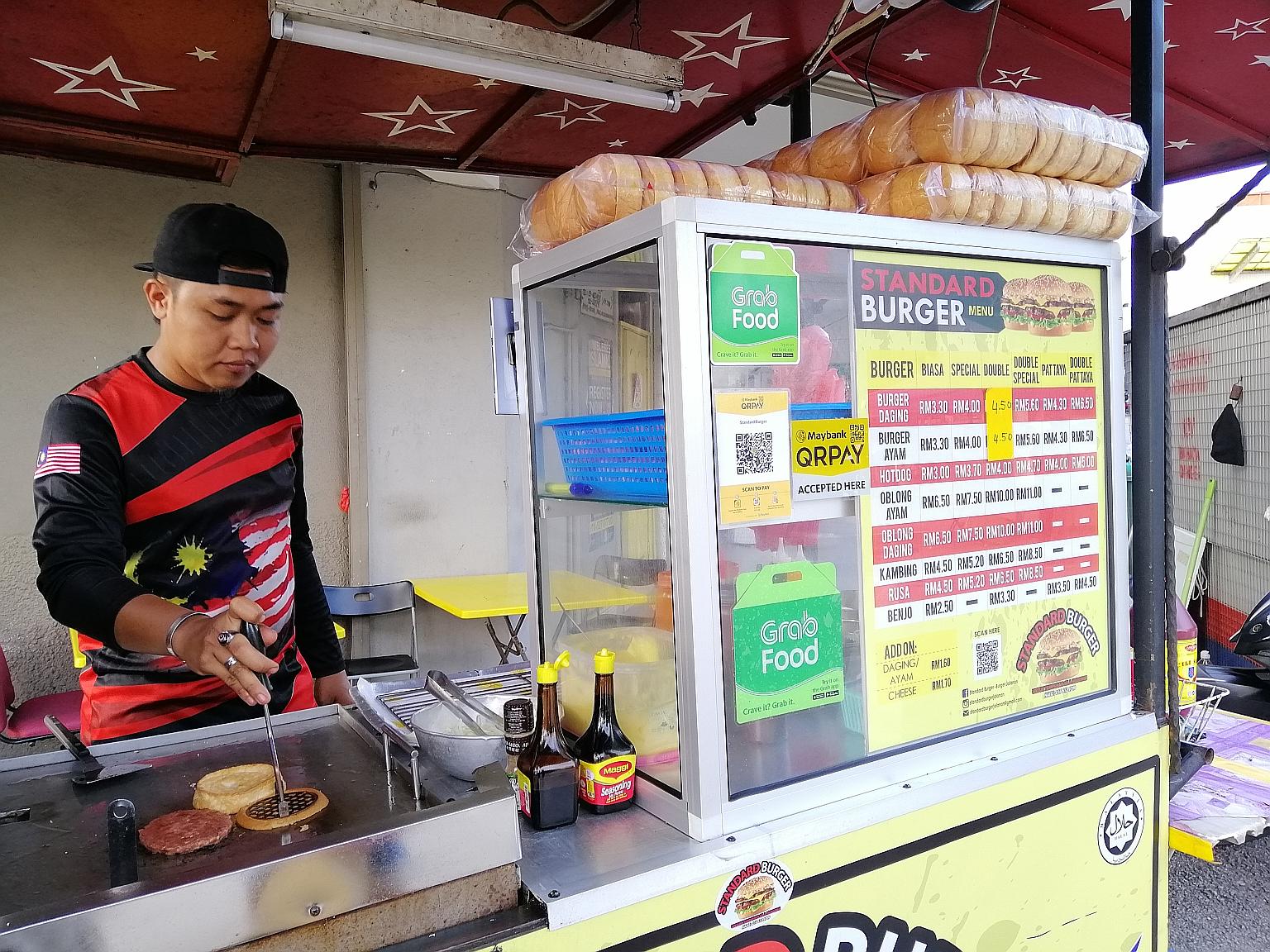Malaysia targets half its population in e-wallet push
Curbing graft main reason for initiative; e-payment firms dangle promotions to win over consumers
Sign up now: Get insights on the biggest stories in Malaysia

A roadside burger stall in Kuala Lumpur that accepts e-wallet payments. As part of its drive to promote e-payments, the Malaysian government is collaborating with GrabPay, Touch 'n Go eWallet and Boost to give RM30 worth of free shopping money for each eligible user who signs up with these firms until March 14.
ST PHOTO: HAZLIN HASSAN
Hazlin Hassan Malaysia Correspondent In Kuala Lumpur, Hazlin Hassan
Follow topic:
While digital payments are often touted as being more convenient than having to carry around wads of cash, the Malaysian government has a novel reason for its e-wallet push: to curb corruption.
South-east Asia's third biggest economy earlier this month officially launched its cashless society push with a target of 15 million users, or half of the country's population of 32 million.
Finance Minister Lim Guan Eng, who has been traipsing around the country in the past two weeks to promote the shift away from cash, said the e-transactions, with everything digitally recorded, should deter bribe takers and givers. After all, Malaysians fed up with the alleged rampant graft of the previous government voted in the Pakatan Harapan (PH) coalition in the 2018 general election, partly on its pledge to clean up corruption.
"In implementing reforms, going cashless is a government priority as one of the means to curb corruption. All transactions are recorded, leaving no room to accept or give bribes," Mr Lim said on Monday.
Malaysia's pushback against graft can be gleaned from the country's rise by 10 spots, to 51, in last year's annual ranking of the Corruption Perceptions Index by the Berlin-based Transparency International. It was Malaysia's best score in 20 years.
For the e-wallet programme, the 20-month PH government has set aside RM450 million (S$151 million) to spur Malaysians to use cashless payment technologies.
The government is collaborating with GrabPay, Touch 'n Go eWallet and Boost to dish out RM30 worth of free shopping money for each eligible user who signs up with these firms until March 14.
GrabPay, which has recorded 20 million downloads of its app, is accepted at more than 30,000 participating merchants.
"In the second half of 2019, Malaysians saved a total of RM5.5 million by using GrabPay for everyday transactions," GrabPay managing director Ooi Huey Tyng told The Straits Times.
She added that over 70 per cent of GrabPay users who received the RM30 government payout have already spent it on food, online merchants or other bills.
While there are concerns over misuse, Ms Ooi said GrabPay has a fraud and security team as well as a security system and fraud detection engine to ensure that safety comes first.
Some Malaysians appreciate the cashless experience. "I like it because there are always money-saving promotions. I also like not having to take out my debit card to be passed to the cashier, which minimises the transfer of bacteria," said Ms Karina Schultze, 39, who has three children.
But to be sure, many challenges remain.
While many Malaysians readily use Touch 'n Go prepaid cards for highway-toll payments and LRT train rides, they seem resistant to abandoning cash when buying groceries.
Even fewer are whipping out their phones to pay for food at Indian eateries or street stalls selling burgers.
Further, the millions of people in rural areas would need more cajoling to accept the scheme.
Finance Minister Lim said just 5 per cent of total daily payments in Malaysia today is cashless.
A roadside burger seller in Kuala Lumpur said many people still prefer cold hard cash. "Not many customers actually use QRPay, even though we have it," he said, referring to the e-wallet offered by Maybank, Malaysia's biggest lender.
As e-wallets are new, there are many players fighting for market share, with myriad promotions being thrown about to woo new users.
Some of the promotions include Touch 'n Go e-wallet offering discounts on the KLIA Express train to the Kuala Lumpur airport. Maybank's QRPay last month offered 31 per cent discounts and, for Chinese New Year, up to RM18 cashback at participating outlets.
Bank Negara, Malaysia's central bank, lists 49 licensed "e-money issuers" on its website, including five banks.
Education on the advantages of e-wallets in Malaysia will continue for some time, as not everyone is convinced of its big advantage over credit or debit cards.
Freelance writer Shirley Tan, 50, said she does not understand the e-wallet concept or its benefits.
"Why can't we just use payWave with the bank debit card? I am so confused by the e-wallet."

